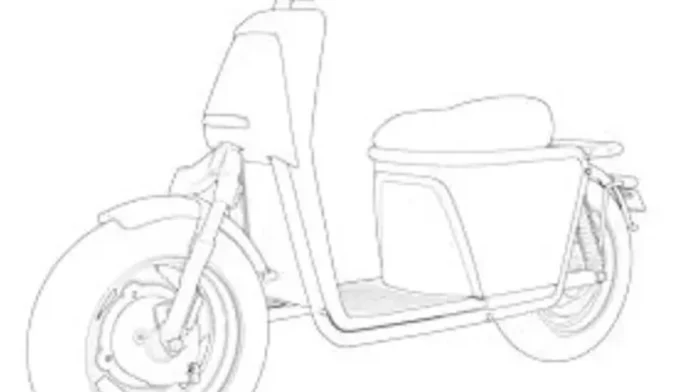Ola Electric’s Strategic Move into the B2B Electric Vehicle Segment
Discover Ola Electric’s groundbreaking entry into the B2B electric vehicle market, poised to transform commercial transportation in India. Delve into the details of Ola’s latest EV innovation, a versatile electric two-wheeler designed for efficiency in last-mile delivery and business operations.
This article sheds light on the vehicle’s design, potential swappable battery technology, and its anticipated impact on eco-friendly commercial mobility. Get insights into Ola’s strategic expansion and the expected launch, highlighting the company’s commitment to pioneering sustainable, cost-effective solutions in the rapidly evolving EV landscape.
Introduction to Ola Electric’s EV Innovations
Ola Electric, a frontrunner in India’s electric vehicle (EV) industry, is making significant strides towards revolutionizing the nation’s approach to electric mobility. Known for its impactful entrance in the personal EV sector, the brand is now expanding its horizons to include business-to-business (B2B) solutions. This strategic move signifies a major shift in Ola’s vision, targeting a broader market segment and diversifying its product offerings.

Unveiling Ola’s B2B Electric Vehicle Ambitions
The Leaked Patent Drawing: A Glimpse into the Future
Recent developments indicate Ola’s intention to enter the B2B segment with a purpose-built EV. A leaked patent drawing has shed light on this new direction. It reveals a simple, yet functional design of an electric two-wheeler, tailored primarily for last-mile delivery services and other commercial activities. The focus on a barebones chassis and practical design elements highlights Ola’s commitment to efficiency and utility in the commercial EV space.
Design and Functionality: Ola’s Commercial EV Blueprint
Simplistic Yet Functional Design
The leaked design showcases a no-frills electric scooter with ample space on the floorboard, adaptable for either a pillion seat or luggage-carrying accessories. This pragmatic approach in design ensures versatility, catering to various commercial needs. The basic configuration of cycle parts – wheels, suspension, handlebar, and instrumentation – suggests a cost-effective build, aimed at maximizing utility and affordability for business users.
The Powertrain: Anticipating Ola’s Electric Motor and Battery Technology
Speculations on Swappable Battery Technology
While specifics regarding the electric motor and battery remain undisclosed, there’s strong speculation that Ola might adopt swappable battery technology for this new product. Given the extensive usage typical of commercial vehicles, swappable batteries could be a game-changer. They would significantly reduce charging times, enhancing operational efficiency, and profitability in commercial applications.
The Market Impact of Ola’s B2B Electric Scooter
Revolutionizing Last-Mile Delivery and Commercial Transport
Ola’s entry into the B2B segment with its electric two-wheeler could potentially revolutionize the last-mile delivery and commercial transport sectors in India. By offering an EV solution that prioritizes efficiency, cost-effectiveness, and versatility, Ola Electric is poised to meet the growing demand for sustainable commercial transportation solutions.
Anticipating the Official Launch and Market Reception
Launch Timeline and Market Expectations
While Ola Electric has not yet revealed official details about this new product, the market anticipates its debut later this year or early 2025. This launch is expected to generate significant interest, given Ola’s reputation and the growing emphasis on eco-friendly commercial transport solutions in India.
Impact on ola enthusiasts
The move by Ola Electric into the B2B EV space marks a thrilling development for Ola enthusiasts, heralding a new era of innovation and sustainable practices in commercial transportation. This expansion isn’t just about introducing a new product; it’s a testament to Ola’s dedication to revolutionizing urban mobility with an environmentally conscious approach.
For those passionate about electric vehicles and green technology, this step signifies a pivotal moment in the EV industry. Enthusiasts of Ola Electric can eagerly anticipate being part of this groundbreaking journey, as the company continues to challenge the norms and lead the charge towards a more sustainable future in transportation.
Pros and cons of Ola Electric’s expansion into the B2B electric vehicle segment:
| Pros | Cons |
|---|---|
| 1. Sustainable Solutions | 1. Initial High Costs |
| Reduces carbon emissions, aligning with global environmental goals. | Initial development and production may require significant investment. |
| 2. Market Expansion | 2. Market Uncertainty |
| Opens new revenue streams and diversifies Ola’s customer base. | The B2B EV market’s acceptance and demand can be unpredictable. |
| 3. Technological Innovation | 3. Infrastructure Challenges |
| Encourages advancements in EV technology, particularly in battery and charging solutions. | Requires robust charging infrastructure, which may not be widely available. |
| 4. Increased Brand Value | 4. Competition Pressure |
| Enhances brand image as a leader in sustainable transportation. | Faces stiff competition from established players in the commercial EV space. |
| 5. Operational Efficiency for Businesses | 5. Adaptation by Businesses |
| Offers businesses efficient and cost-effective transportation options. | Businesses may need time to adapt to new technology and operational models. |
| 6. Support for Urban Mobility Goals | 6. Dependence on Technology Advancements |
| Contributes to reducing traffic congestion and pollution in urban areas. | Success relies heavily on continuous technological improvements. |
Conclusion: Ola Electric’s Vision for an Electrified Future
Embracing Sustainability and Innovation in Commercial Mobility
Ola Electric’s foray into the B2B EV segment marks a significant step in its journey towards sustainable transportation. By addressing the specific needs of commercial enterprises and contributing to the reduction of carbon emissions, Ola is not just expanding its business scope but also reinforcing its commitment to environmental stewardship and technological innovation.

































